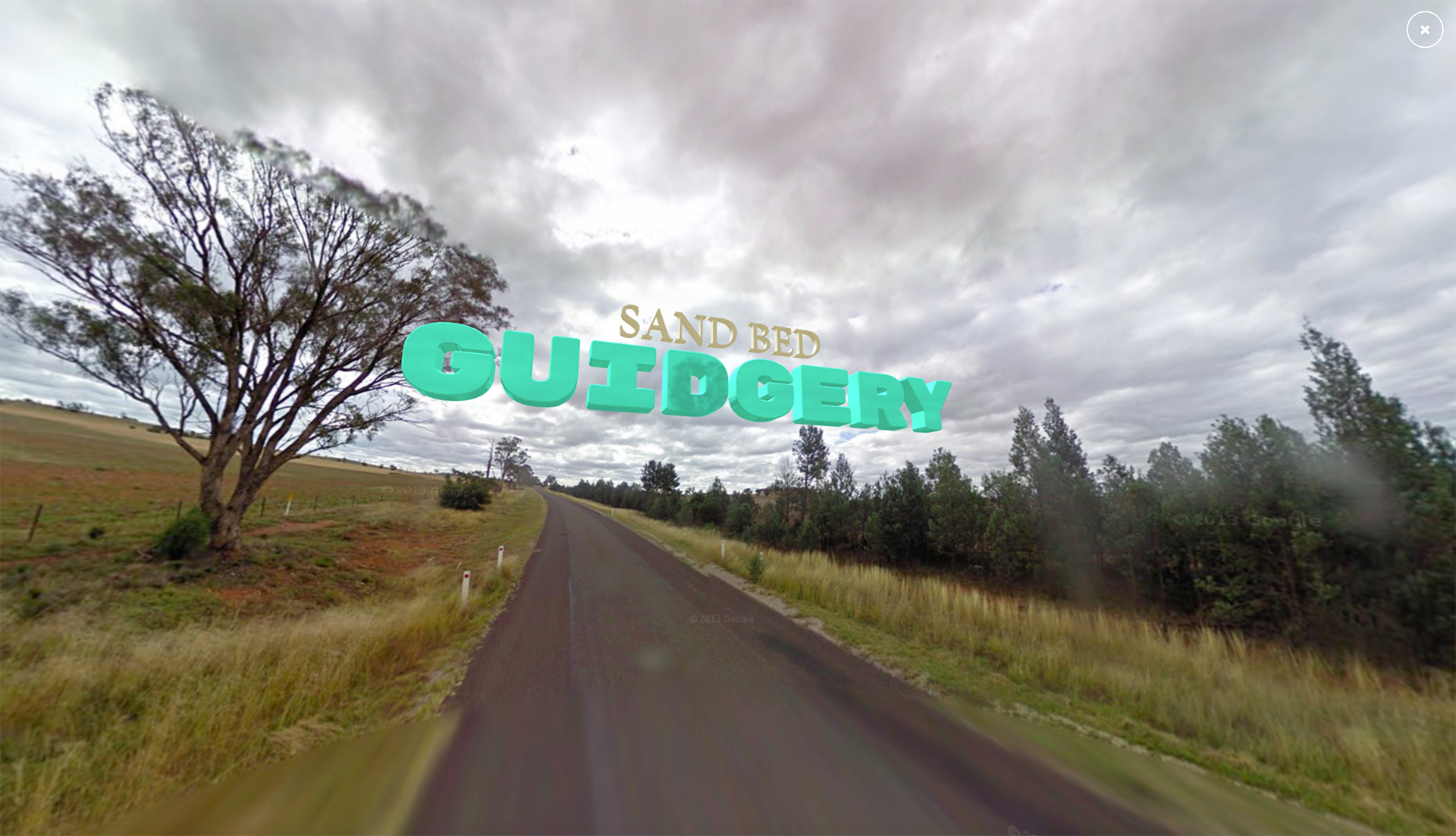
Muru View
Muru View: Visualising Aboriginal place and meaning.
NGARA YAR-RE GNA Hear, Say, See
To celebrate NAIDOC week this year, with it’s theme of ‘The importance, resilience and richness of Aboriginal and Torres Strait Islander languages’, the DX Lab has partnered with the Library’s Indigenous Services team and creative studio Sandpit to produce our latest experiment Muru View.
This work follows on from our previous experiment Weemala that uses Survey forms and correspondence received by the Royal Anthropological Society of Australasia regarding Aboriginal place names, 1899-1903.
Muru View (Muru – meaning path in Darug) is an interactive data visualisation drawing from the State Library of New South Wales Indigenous language collections. The data used in the interactive is over 120 years old, and is drawn from the survey forms collected by the Royal Anthropological Society of Australasia. We open this historic data to encourage dialogue and discussion around the words and meanings that have been recorded.
Created in collaboration with creative studio, Sandpit, Muru View dynamically uses data to display locations around New South Wales incorporating their Indigenous name and meaning that were recorded at that time, all using the Google Maps API in a way never done before. The result is an interactive online experience and a projected installation at the State Library of New South Wales itself coinciding with NAIDOC week 2017 in the first week of July.
The 2017 NAIDOC theme ‘Our Languages Matter’ focuses on the importance, resilience and richness of Aboriginal and Torres Strait Islander languages. This project seeks to increase public awareness of these historic Indigenous language archives and cultural history using cutting edge technology and beautiful design.
The words, placenames and meanings that are used in this project are drawn from historic sources, and were recorded by non-Aboriginal people about Aboriginal languages. Some of the words and meanings may have been misinterpreted when originally recorded, and could be inaccurate. If you would like to provide more information on the words, placenames and meanings please contact us. We encourage Aboriginal people and communities to get in touch. Please email the Indigenous Services Team at info.koori@sl.nsw.gov.au
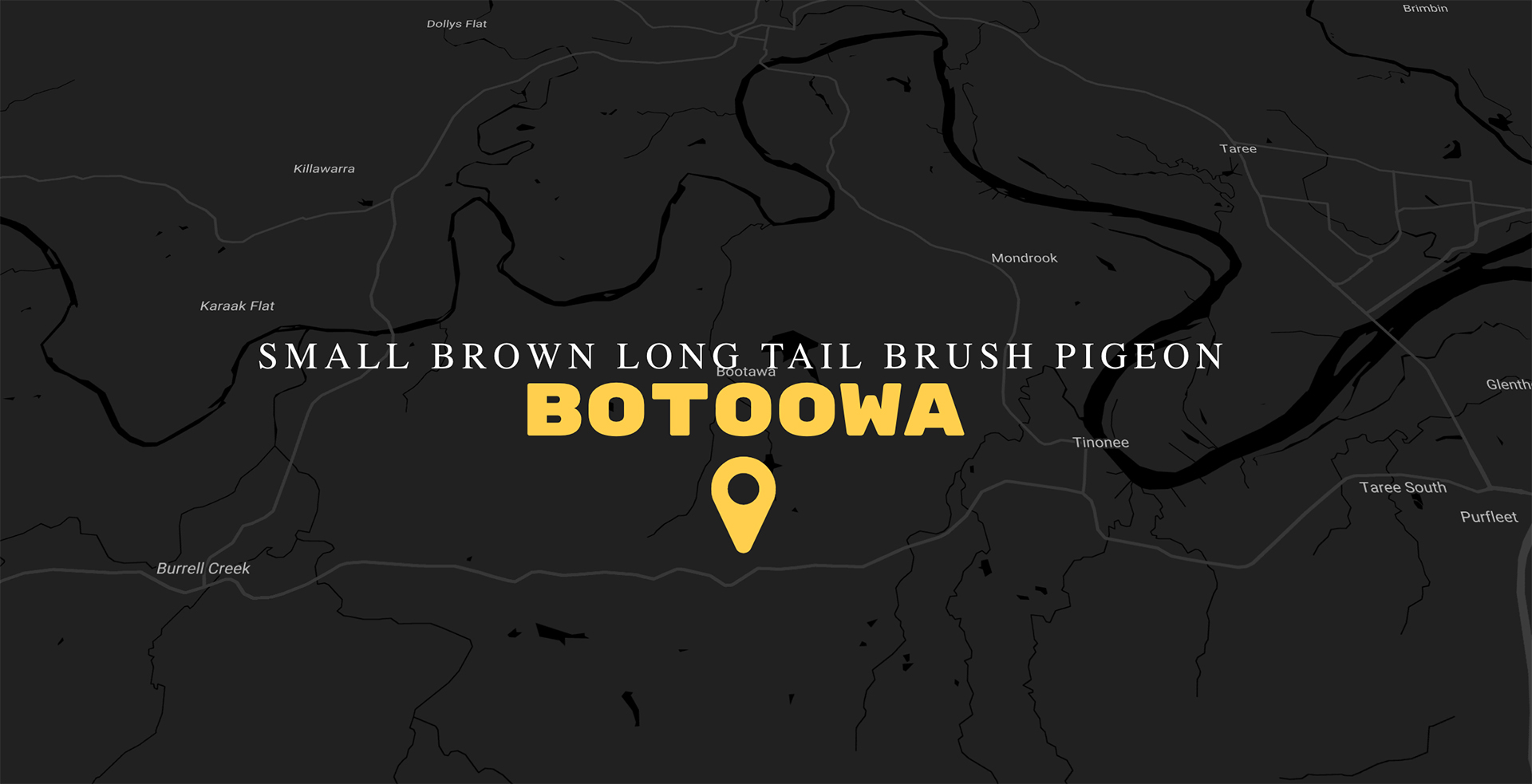
We spoke to Kirsten Thorpe, Manager Indigenous Services State Library of NSW.
Why is it important for us to be working with this particular data set?
It is wonderful to be able to share information on Aboriginal place names and meanings. This is a significant collection however it still needs further research and scholarship in order for us to know more about its content. There has been a lot of volunteer effort that has gone in to make this project possible though our transcription tool. It is important that we open up our collections for debate, discussion and critique. More broadly it’s great for us to be sharing our collections relating to Indigenous Australian languages.
What are some of the complexities that we need to be aware of?
These are words recorded in the 1890s, so we need to understand them in their historical context. The material was recorded by people – government officials (surveyors, police) and settlers – interested in languages, however we do not get a sense of who the Aboriginal informants were in this exchange.
Their value can be known by connecting with community, and other scholars, to know more about them. So Muru View is really starting a conversation. We want people to enjoy the interactive, but also consider the history of the data. These words may not be accurate nor be reliable.
What do you hope will be achieved from this latest experiment?
To start a conversation, and to further engage with communities around this content. I love the visual aspect of this and the questions that the layering of the historic manuscripts have with Google street view. What I would love to see next is a community layer – where we get a sense of the accuracy, pronunciation and language group that the content comes from. By curating the data in the digital space, we can allow people to enter a collection that is deep in usually not accessible by the community and public.
Please read the special care notice before entering the website.
SPECIAL CARE NOTICE
About the Aboriginal place names and meanings. This website is not intended to be an authoritative source for Indigenous Languages and placenames in Australia. The language lists available from the State Library of New South Wales were recorded historically by many individuals — both amateurs and professionals — who documented Indigenous words, placenames and meanings. This includes records from surveyors and public officials.
We spoke to Dan Koerner, Director Sandpit.
DX Lab experiments don’t follow traditional website briefs, what drew you to working with us on this one?
At Sandpit we have a philosophy that a front end experience can take a multitude of different forms. This idea helps us to build surprising experiences from nostalgic payphones to interactive projection mapping and immersive audio tours to talking lamps. We also like to push the web to the limits of what it can do. The DX Lab sits on such a vast amount of data that is just screaming for the kind of approach we take to creating digital experiences. Just what can you do with all of this data? What does it look and feel like? How do we create meaningful experiences for people to engage with it? These are the kinds of questions we love answering at Sandpit
Can you describe the working methodology for this particular experiment?
To begin this project we had a strong sense of what the outcome might be but the process would need to evolve as we went along. To make this project really meaningful we also needed to familiarise ourselves with the dataset fully and begin an internal process of experimenting with front ends through a series of paper prototypes. By getting the possibilities up on the wall for everyone to scrutinise, we get a stronger sense of experiencing the project as if it was complete – albeit with a few imaginative leaps!
While at Sandpit we’re not dogmatically beholden to a agile project management in its strictest sense, this particular project lent itself to an iterative process, allowing us to experiment with small chunks at a time until we could see the project take form. In doing something that has never been done before, this is a great way to approach work and allows us to tackle any hurdles as they appear.
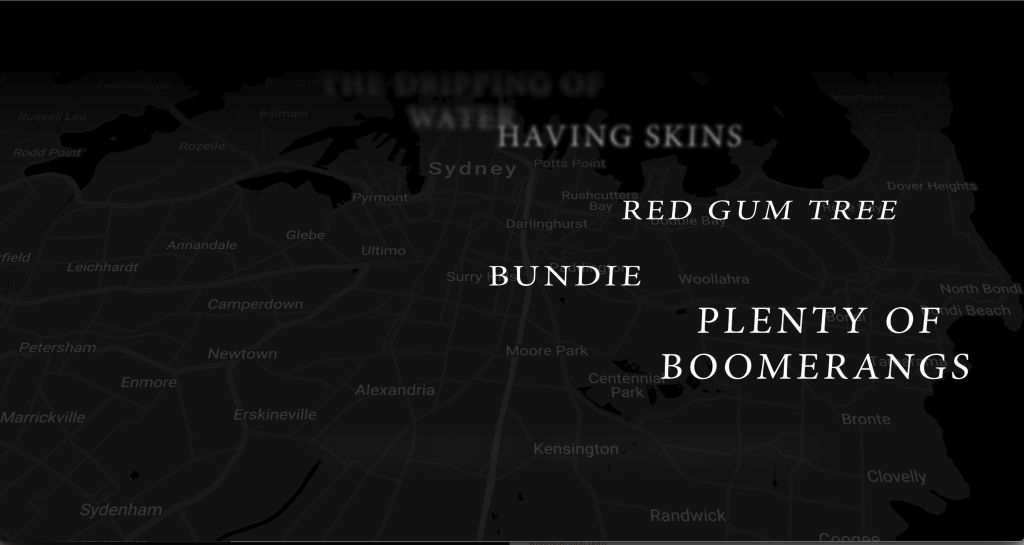
What have been some of the technical challenges you have overcome?
This project had the usual challenge of creating an exciting experience for all sorts of devices from mobile to desktop with the additional output of the projected installation on site at the State Library of NSW. This has meant creating something that looks and feels really cool on something as small as your own mobile device to the massive split screen projection, all pulling from the same centralised dataset. We think we’ve made something that is great no matter how you engage with the project!
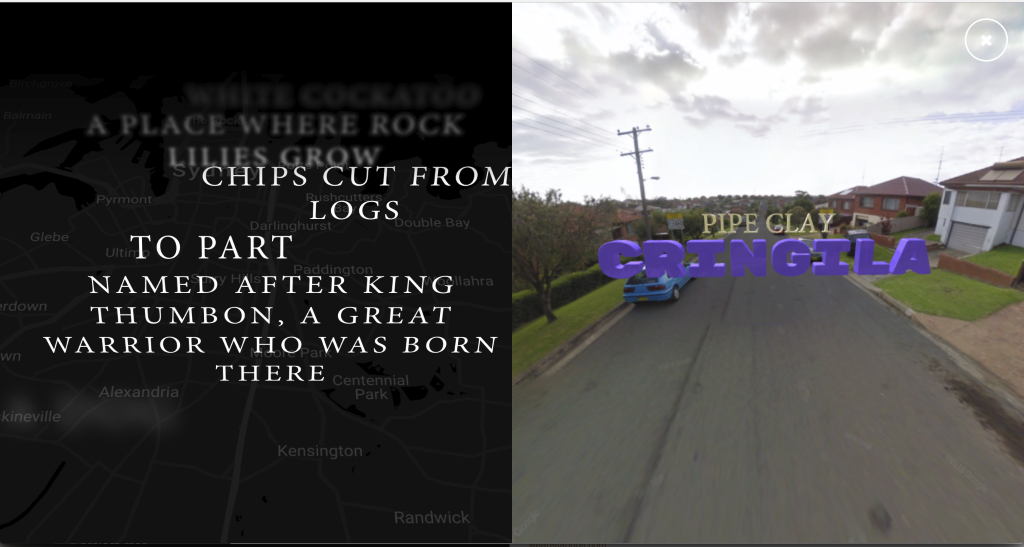
Have you made any unexpected discoveries whilst working through this experiment?
We knew really early on that we wanted to create these kind of sculptural, 3D text objects floating in space in a Google Streetview 360˚ image. Because of this, the first thing we needed to do was to check that there was a Streetview image available for every location in the dataset the DX Lab supplied us with. To do this we built our own validation tool that could read a latitude and longitude entry in the dataset and “ask” Google if there was a Streetview image available. We could even define the resolution to within a particular radius of the latitude and longitude. We went for 2kms and found a series of entries where there was no Streetview image available. This has allowed us to create a map of these places in NSW where the is no Streetview image ready to approach individuals and the broader Public Library Network of NSW to encourage them to go out into the field with their smartphones and to create a 360˚ image using Google’s Streetview app.
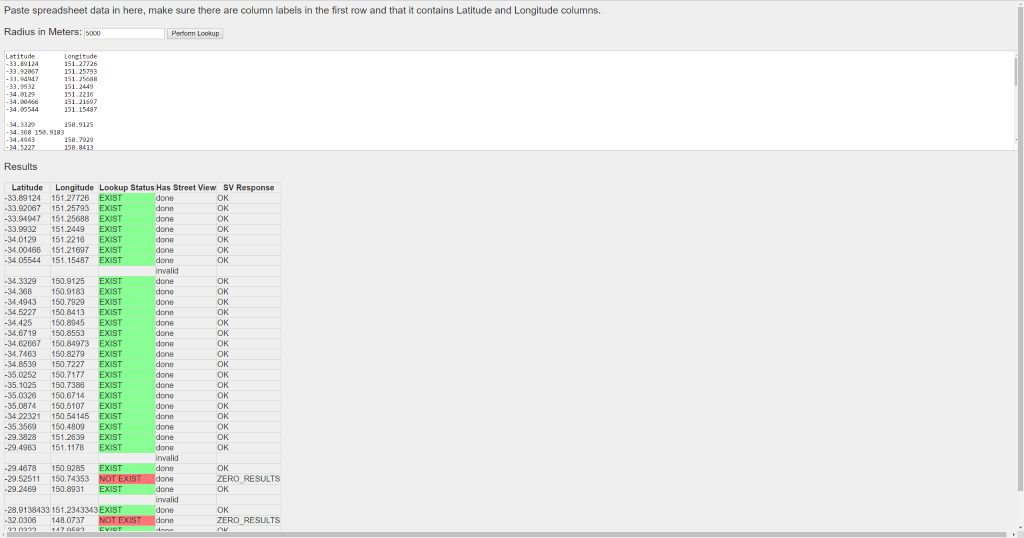
In addition to these fascinating discoveries the DX Lab now has access to our validation tool to check for the existence of Streetview images in any of their other datasets in a multitude of additional projects.
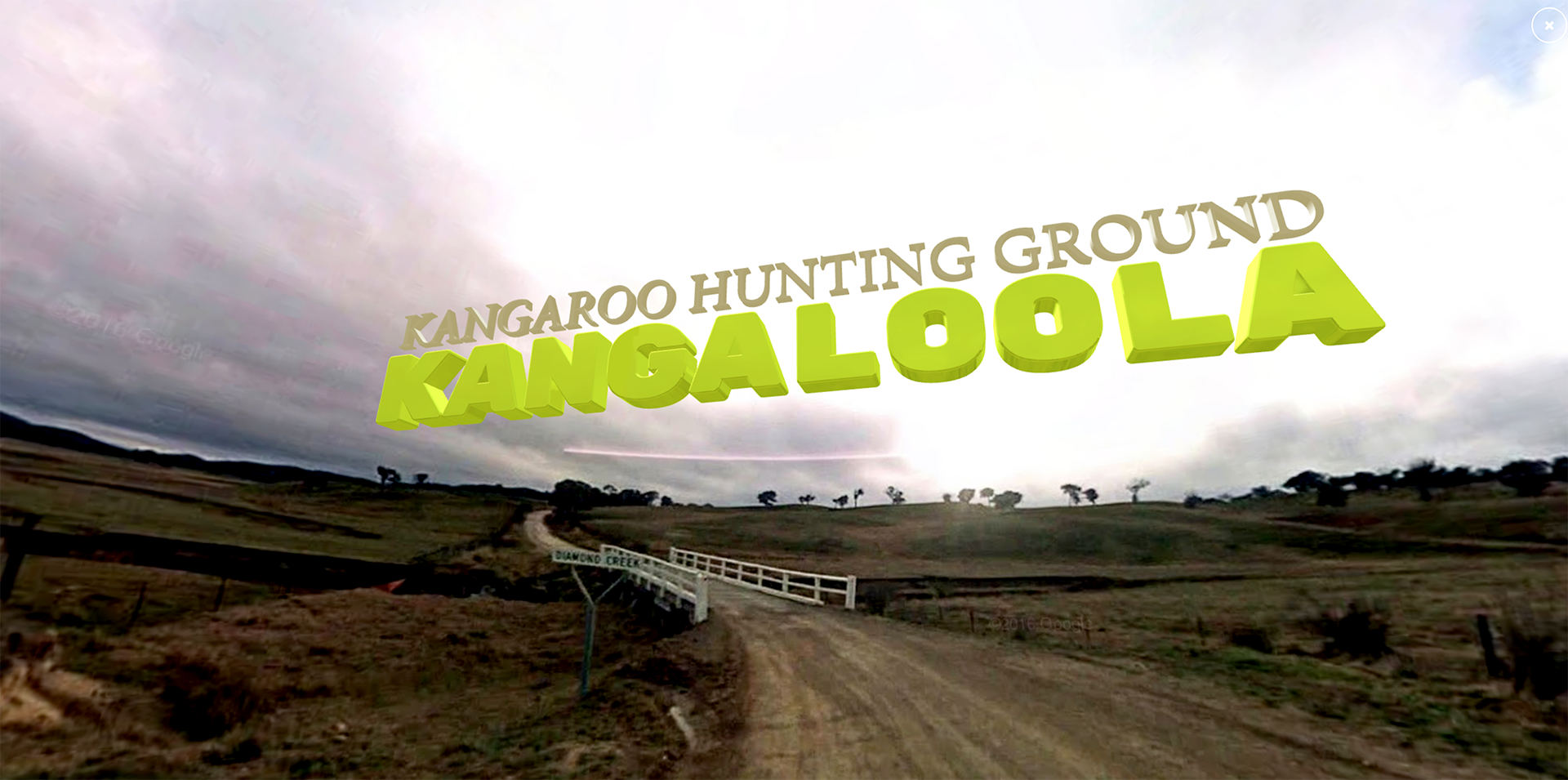
Encouraging dialogue and discussion about the words and placenames that have been recorded
Indigenous Services spoke with Brad Steadman, Brewarrina
What are some of the challenges you see of working with historic collections like those of the Royal Anthropological Society of Australasia?
The first thing that I can see is that the collection doesn’t record the names of Aboriginal people that were informants to the records being created. The collection itself could be questionable, and language may not have been recorded correctly. There are flaws in the quality of what has been recorded, at best it is close to being correct, at worst it may be a misrepresentation of what was originally communicated.
There is a historic and linguistic dilemma being presented in making these materials accessible, this is only one manifestation of which we hope and think such an endeavour will clarify a 120 year problem of neglected archive material.
The problem you have with these descriptions from 1890’s is that we don’t know what the questions were to solicit such answers and the randomness of the people gathering the info means very rarely did they have any experience with Aboriginal people or their languages this also means that whoever they were also had next to or very little knowledge or simply nobody had any linguistic knowledge or experience. This is doubled when it comes to the spelling of place names that goes for today not just only 120 years ago.
Why is context so important for people to be aware of with these collections?
It is important that people see this project in its historic context, in that the data has been taken from records created in the 1890s and is now being displayed digitally. People who are engaging with the content should be encouraged to ask questions about the quality of the data, who was it written by, and what is the linguistic and historic context?
The challenge is that the words have been taken out of their language, and put into an English ‘word-list’ setting. The words are not presented as a language, but representative of a language.
How does the digital interactive change the way people that people connect with this language material?
Its complex to take material written in the late 19th century, and to present that in digital forms. Access to this material in this new way creates opportunities for more access, but it is also very important for people not to lose that connection to the materials context.
In presenting the information in this new way, the Library should seek feedback from language speakers and custodians, and be proactively engaged in discussions. Rather than reacting to content that was recorded over 120 years ago.
Do you have any advice for people who would like to know more about Aboriginal languages in their area?
I would like for people to have the chance to learn and understand the names and information, but to view this in context. People need to be asking more questions about the information that is recorded.
We hope you enjoy Muru View.
MEDIA:
Mornings with Wendy Harmer ABC Sydney Indigenous place names and meanings on Google Street View
NITV Visualising Aboriginal place and meaning
ABC NEWS NAIDOC Week: Using Aboriginal words in our daily speech key to preserving languages
Spatial Source 4 maps uncovering Aboriginal history and culture.
Communication Arts Sandpit and DX Lab’s project displays and informs visitors of the indigenous Australian placenames of New South Wales.


Comments
One of the creative and experimental developments of the Indigenous place names lists from the Australasian Royal Anthropological Society of the 1890’s that I had the privilege of work on with other volunteers in 2014-2015. Congratulations to Kirsten Thorpe and the Indigenous Services Unit of the State Library of NSW.